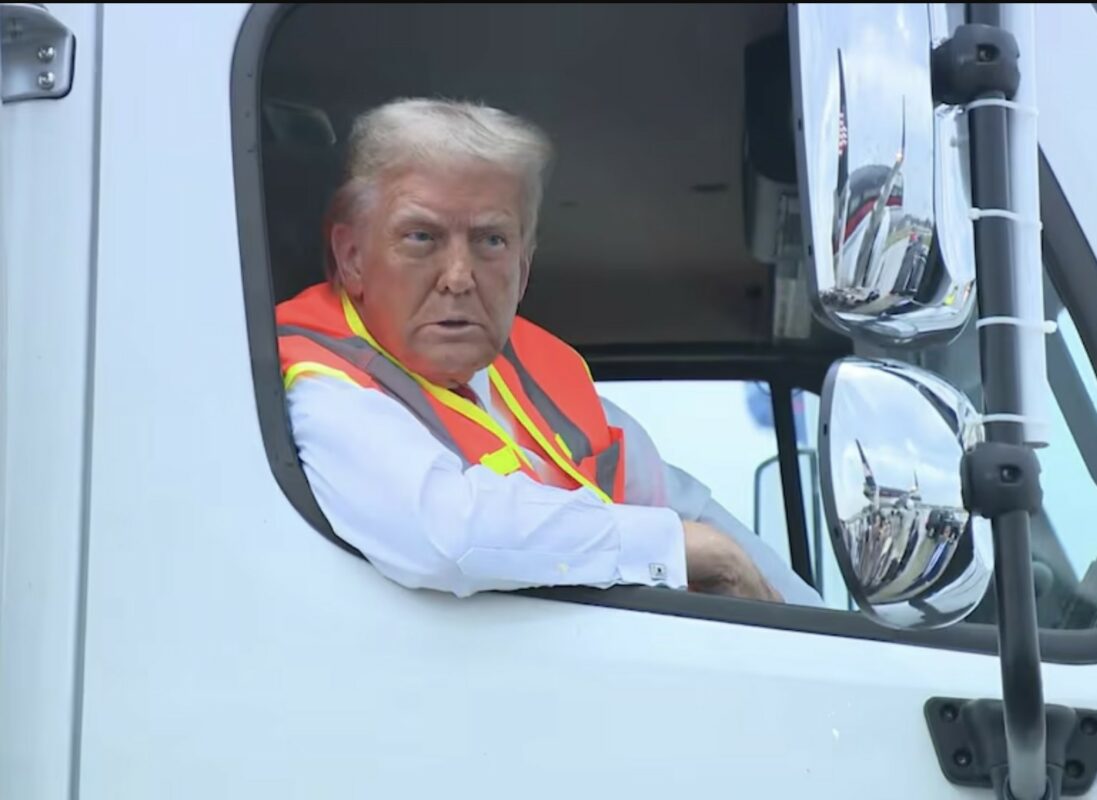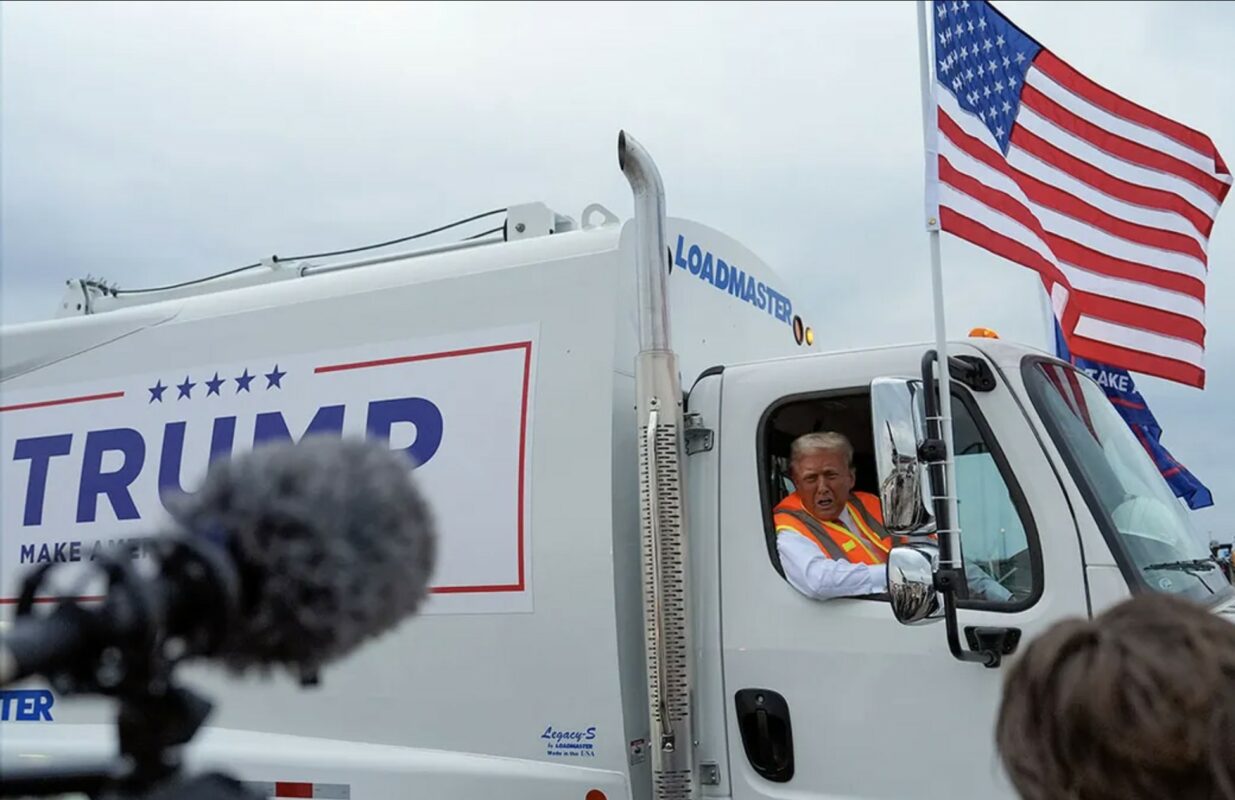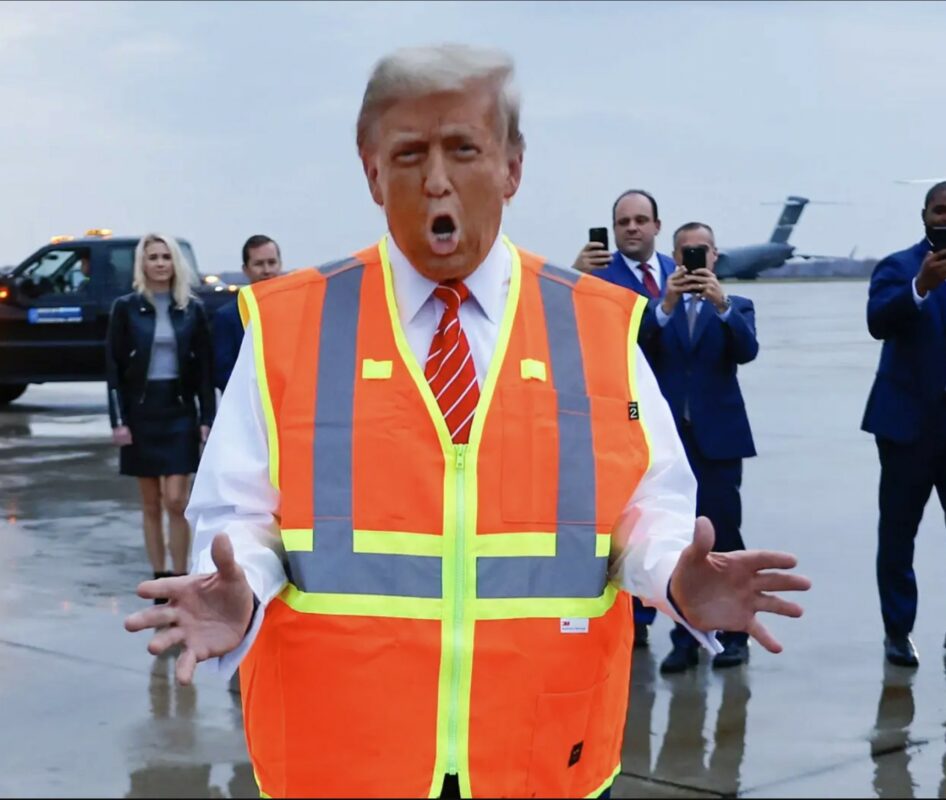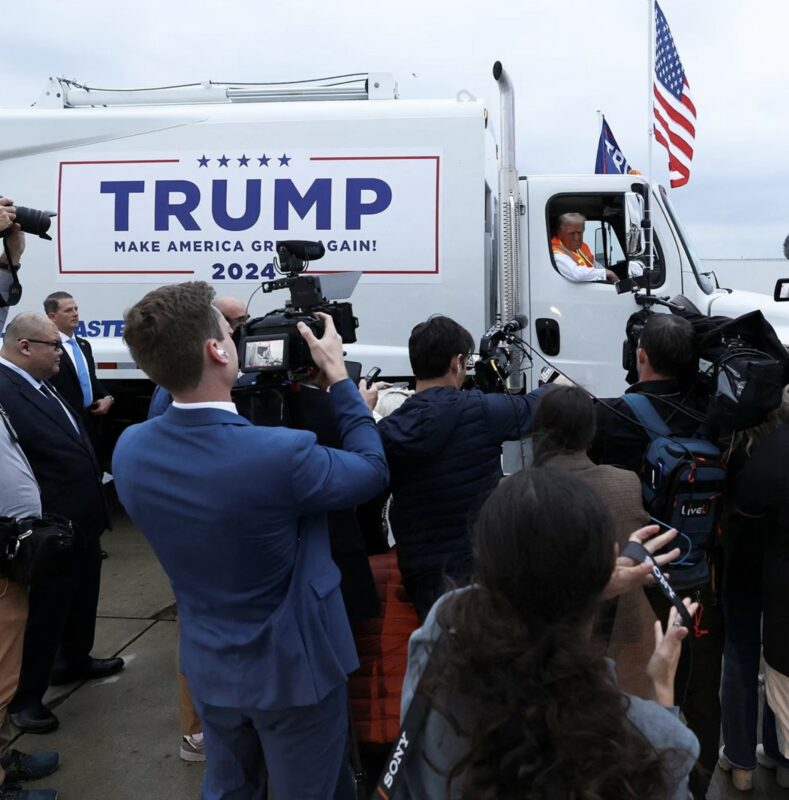In a surprising and unusual move, former U.S. President and billionaire Donald Trump recently appeared in a public event dressed as a garbage truck driver. Known for his larger-than-life personality and affluent lifestyle, this rare appearance dressed as a blue-collar worker quickly became a media sensation and sparked a flurry of online commentary.
The Event: A PR Stunt Gone Awkward?
The occasion was reportedly part of a publicity stunt aimed at connecting with the working-class demographic. Trump, known for his flashy suits, signature red ties, and lavish lifestyle, looked out of place as he donned a neon safety vest and work pants, with gloves and a hard hat to match. The attire, chosen to portray an “everyman” image, seemed an odd fit for the billionaire real estate mogul.
While some praised him for “walking in the shoes of everyday Americans,” many onlookers and critics found the move forced and even awkward. Photos circulating online showcased Trump attempting to pose confidently beside a garbage truck, but his stiff demeanor suggested he was out of his element. For some, it seemed like an attempt to bridge the gap between his billionaire lifestyle and the blue-collar worker he aimed to connect with.
A Billionaire and the Working Class: Strained Symbolism?
Trump’s attempt to relate to the working class has been a key element of his brand since his entry into politics. Known for his populist rhetoric, he has often appealed to blue-collar workers by criticizing elites and advocating for policies aimed at economic growth and national pride. However, Trump’s awkward portrayal as a garbage truck driver raises questions about the effectiveness of such a display.
Critics argue that dressing up as a worker isn’t necessarily what resonates with blue-collar Americans, especially when it’s a billionaire doing so for a photo op. The gesture might seem inauthentic to those who perform difficult labor daily. Still, Trump supporters assert that his willingness to don the uniform, despite its awkwardness, shows he is unafraid to stand with the average American.




Public Reception: Polarized Reactions
Social media, as expected, buzzed with responses. Memes, tweets, and posts flooded the internet, with reactions ranging from amusement to criticism. Supporters praised Trump’s move, viewing it as an admirable attempt to identify with ordinary people. In contrast, critics viewed the photo op as insincere, seeing it as a calculated PR stunt to improve his image rather than a genuine connection with working-class citizens.
Some analysts observed that Trump’s move might even alienate some blue-collar voters, who could view it as a form of “playing dress-up” rather than addressing the real issues affecting their lives. Political commentators suggested that this approach could backfire if working-class citizens interpret it as patronizing or disingenuous.
A Continuing Trend in Politics?
Trump’s garbage truck driver appearance is just one example of political figures trying to present themselves as “relatable.” Publicity stunts are often crafted to project the image of a “man or woman of the people,” but the impact varies depending on the authenticity perceived by the audience. When performed poorly, such efforts can have unintended consequences.
For Trump, his image as a billionaire with a direct line to blue-collar America remains crucial to his political strategy. Whether his appearance in a garbage truck driver’s uniform succeeded in its purpose or not, it undoubtedly stirred discussion and raised eyebrows, leaving a lasting impression on both his supporters and detractors. As the former president continues to prepare for possible political campaigns, stunts like these hint at his ongoing effort to remain in the spotlight, even if it means embracing an unusual new look.
In the end, the event epitomized the complexities of modern political branding, where even billionaires are eager to project themselves as relatable to the common man—no matter how awkwardly.
